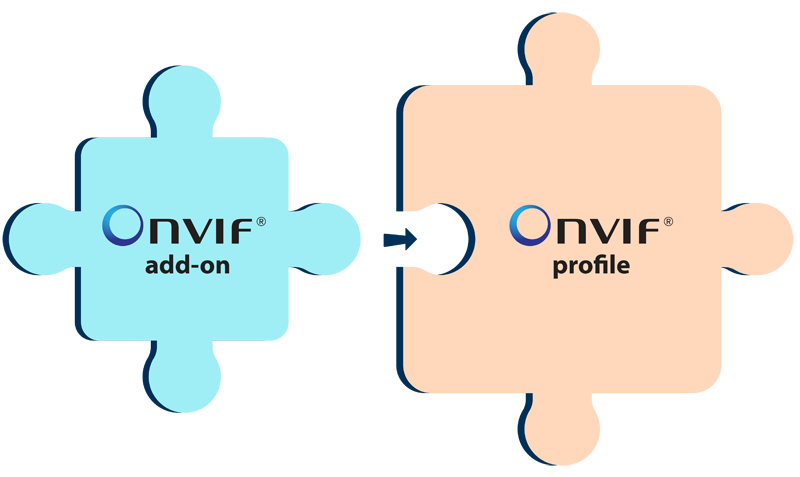Profiles, Add-ons and Specifications
ONVIF provides and promotes standardized interfaces for effective interoperability of IP-based physical security products. The work starts with defining the network interface specifications for ONVIF conformant products. Selected specifications can then be packaged into ONVIF profiles or add-ons that allow for product conformance claims by ONVIF members. A product must successfully pass an ONVIF test tool to claim conformance to a profile, and optionally, an add-on.
ONVIF Profile
An ONVIF profile has a fixed and comprehensive set of features that enable a functional product to be developed solely on the profile specification. A profile has mandatory as well as conditional features, which are features that should be implemented by an ONVIF conformant device or client if it supports that feature in any way, including any proprietary way. Specifications for profiles cannot be changed to ensure backward compatibility.
ONVIF Add-on
An ONVIF add-on consists of at least one or more features that solve one use case. An add-on, by itself, is not comprehensive enough to qualify as a profile. Specifications for add-ons do not include optional requirements for devices/clients or conditional requirements for devices. Optional requirements should be avoided but may be allowed for clients only on a case-by-case basis. To conform to an add-on, a product must also conform to an ONVIF profile.

Profile vs. Add-on
While the features included in profiles cannot be changed, add-ons are easily adaptable to evolving technology/specification requirements. An add-on, unlike a profile, supports version handling and can be updated quickly to adjust for new technology additions or updates.
For more details about profiles, add-ons and interface specifications, go to: